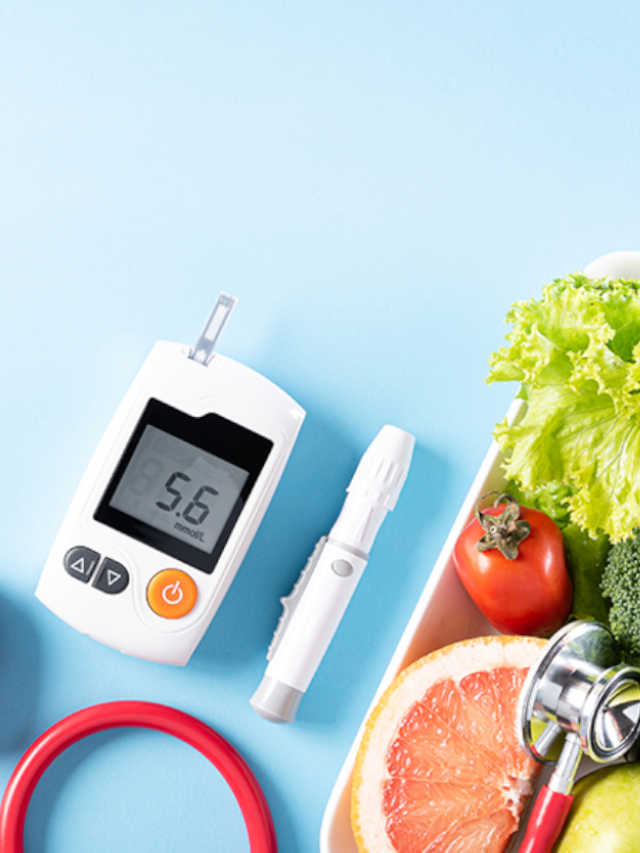Consuming a high-fat diet, physical inactivity and obesity are the leading factors contributing to this epidemic. Another concerning factor seen is the incidence of diabetes in adolescents and teenagers. Diabetes can increase the risk of developing high blood pressure, high cholesterol, skin issues, vision problems, nerve or kidney damage, and amputation as well. Encouraging a fibre-rich diet, engaging in physical activity and reducing consumption of processed foods has become the need of the hour. Avoiding smoking and moderating alcohol consumption can bring about a reduction in glucose levels too. According to the IDF Diabetes Atlas edition of 2019, India ranks second as the home to the highest number of diabetics. There are approximately 77 million diabetic individuals in India alone.
Types Of Diabetes
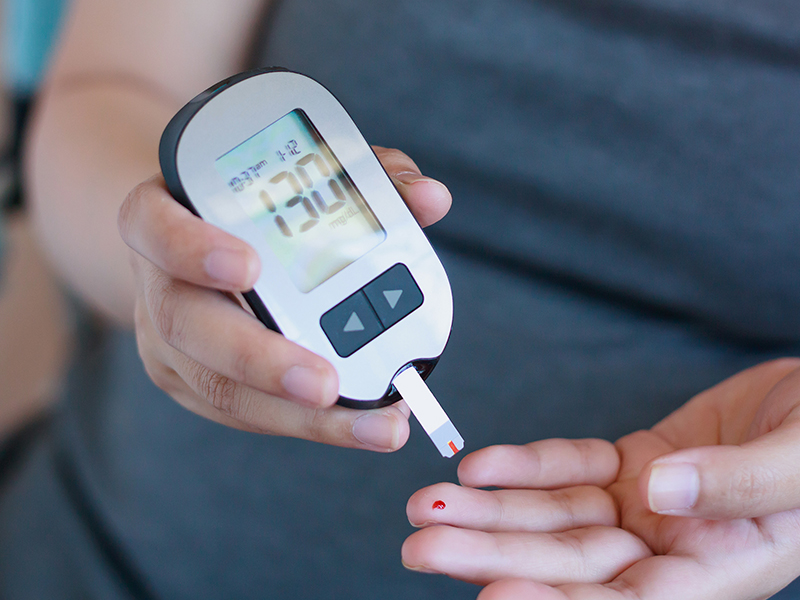
Diabetes is a disease characterized by an increase in blood sugar levels as a result of reduced insulin functionality, reduced insulin production or both. There are two types of diabetes.
Type-1 Diabetes
It is also known as juvenile diabetes as this type was frequently diagnosed in children. It is an auto-immune disease where the body’s immune cells attack pancreatic beta-cells that produce insulin.
Type-2 Diabetes
In this type, the beta-cells can produce insulin but the body is unable to utilize the insulin efficiently. Type-2 diabetes can be caused as a result of an inactive lifestyle, family history, genetics, obesity, and increased consumption of processed foods.
10 Myths Regarding Diabetes
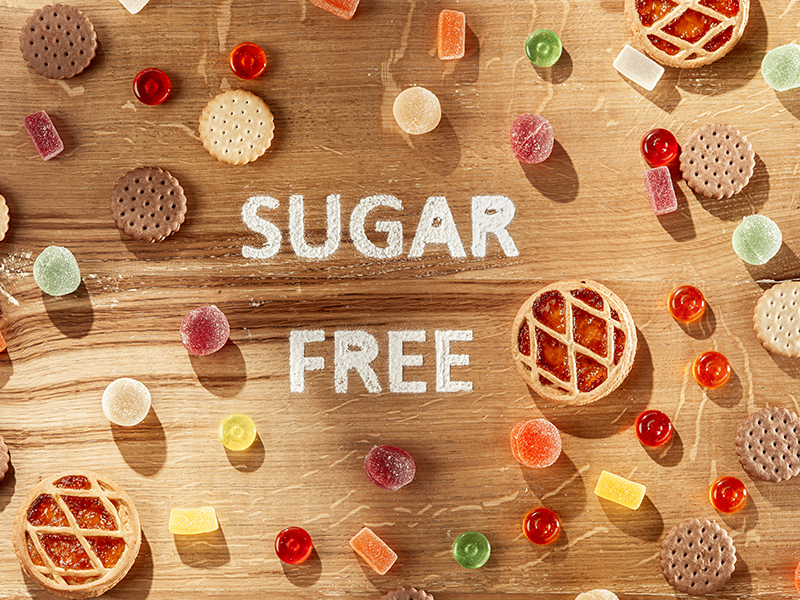
Now that you know about the types of diabetes, let us look at some of the myths surrounding diabetes.
1. Do Not Consume Sweets
Consuming sweets once in a while is not a crime! Moderation and portion size control are important. You can always consume foods low in carbs or high in complex carbs or even better prepare homemade sweets once in a while to satisfy your cravings!
2. Avoid Fruits
Fruits are a good source of vitamins and fibre. The soluble fibre present in fruits helps in lowering blood glucose levels. You can consume foods having moderate to low glycemic indexes like grapes, apples, strawberries, or oranges. Even fruits with a high glycemic index like watermelon or pineapple can be consumed but in moderation.
3. Go For Sugar-Free Stuff
Just because a food product mentions itself as sugar-free doesn’t mean it has to be! Check the food labels carefully and examine the carbohydrate, fat content. Also, make sure to check the ingredients list as well.
4. It’s Okay To Indulge On Foods While You Consume Medications
Just because you consume diabetic medications does not mean that you can indulge yourself in unhealthy foods. Consuming unhealthy or processed foods regularly can reduce the efficiency of the medications.
5. It’s Okay To Consume Artificial Sweeteners
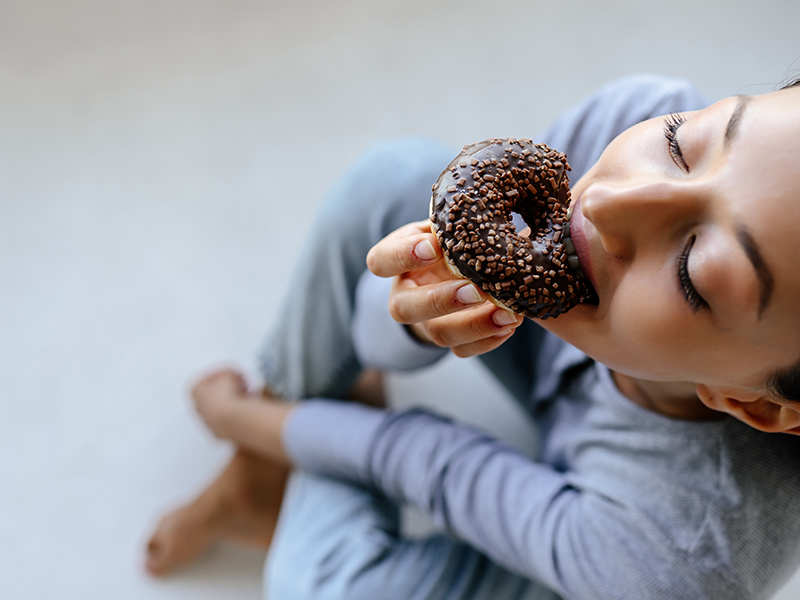
Artificial sweeteners have been deemed safe to consume by FDA (Food and Drug Administration). However certain studies associate the consumption of sweeteners like cyclamate with cancer. Sweeteners have also been linked with weight gain and increased cravings for sugary foods.
6. Diabetics Should Only Take Care Of Their Carb Intake
Diabetics should take care of fats as well. Increased consumption of saturated fatty acids can increase the risk of developing heart diseases. Besides, diabetes also increases the risk of developing blood pressure and increases lipid levels too.
7. Avoid Carbohydrates At All Costs
Complex carbohydrates raise blood sugar levels slowly. Consume foods with a lower glycemic index and lower glycemic load. Even foods that contain a higher glycemic index or load can be consumed but in moderation.
8. Diabetics Cannot Consume Sugar
Diabetic individuals can consume sugar but it is essential to consume it in moderation. You can also pair sugar up with foods containing a lower glycemic index to reduce the spike in blood sugar levels.
9. Diabetics Should Not Indulge In Sports
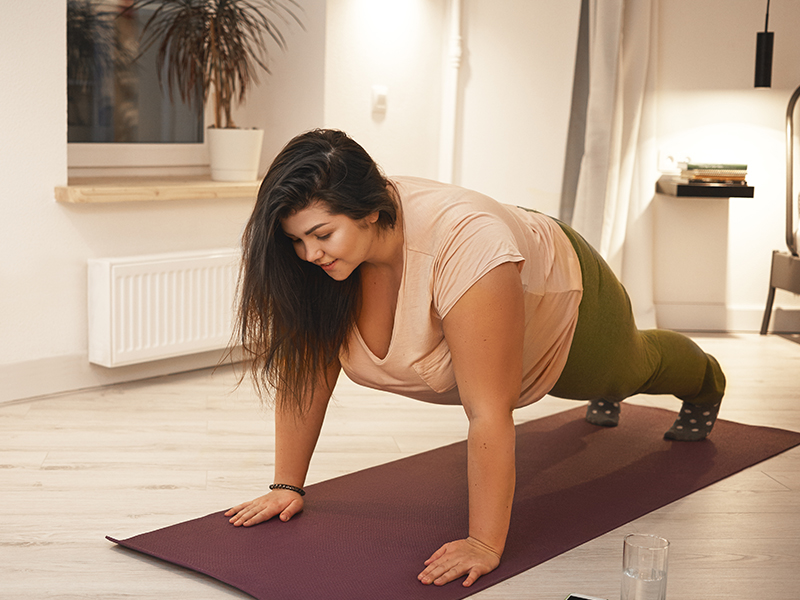
Exercise can help lower blood sugar, cholesterol and blood pressure levels. A balanced diet with appropriate energy, carbohydrate and fat intake is recommended.
10. Only Overweight People Can Get Diabetes
There are other risk factors for developing diabetes as well. This includes sedentary lifestyle habits, overconsumption of processed foods, family history and genetics as well. Individuals who are of normal weight or skinny can also get diabetes.
Nutritional Recipes
Now that you know the myths concerning diabetes, let us look at some diabetic-friendly recipes.
1. Vegetable Oats Soup
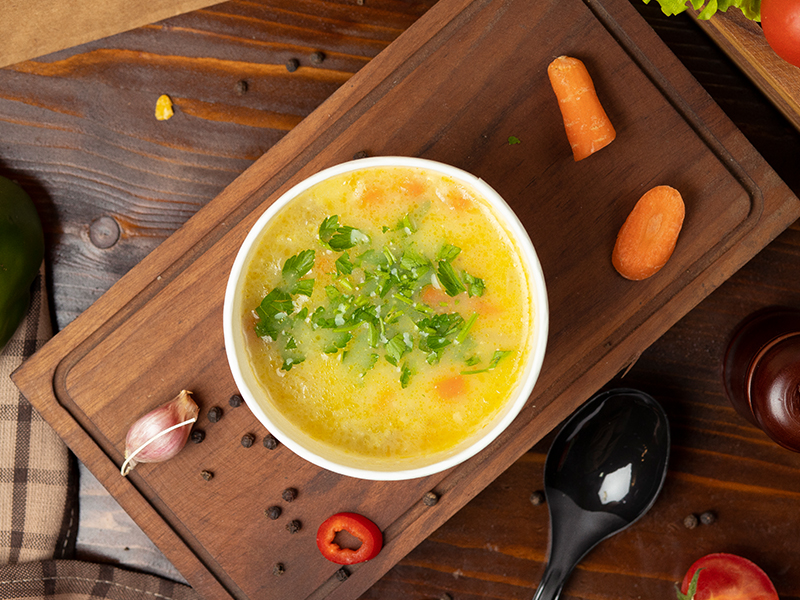
This soup is rich in antioxidants, vitamins, minerals and fibre! It can soothe a sore throat as well.
Cooking time: 15-20 mins
Nutritional values (1 serving approx)
Energy: 40 kcals
Carbohydrates: 6 gms
Protein: 1 gm
Fat: 1.4 gms
Ingredients:
- ¼ cup carrot
- ¼ cup cauliflower
- ¼ cup beans
- ¼ cup spring onions
- Salt to taste
- ¼ cup rolled oats
- 4-5 garlic cloves (laung)
- Few coriander leaves (dhaniya) (for garnishing)
Method:
- In a pan, heat oil. Add garlic and saute for a few minutes.
- Add the vegetables along with 2 cups of water and mix well.
- Add salt along with rolled oats and saute for a few minutes.
- Remove the pan from the flame as soon as the vegetables turn soft.
- Transfer the soup onto the bowl and garnish it with coriander leaves.
2. Varagu Upma
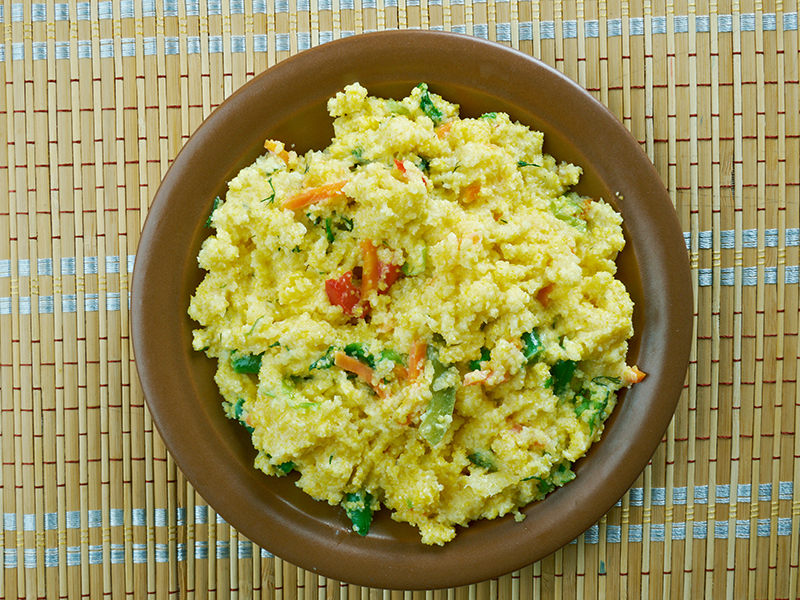
This tasty upma is rich in fibre and ideal for individuals who are fasting.
Cooking time: 20-25 mins
Nutritional values (1 serving approx)
Energy: 155 kcals
Carbohydrates: 25 gms
Protein: 3 gms
Fat: 5 gms
Ingredients:
- ½ cup kodo millet (varagu)
- 1 medium onion (finely chopped)
- 1 tsp mustard seeds
- 1-2 green chillies
- Few curry leaves
- ¼ cup carrots (finely chopped)
- ¼ cup potatoes (finely chopped)
- ¼ cup beans
- 1 tsp urad dal
- Oil for cooking
- Salt to taste
Method:
- Clean and wash varagu. Keep it aside.
- Heat oil in a pan. Add mustard seeds and let them crackle. Add the urad dal after the mustard seeds crackle.
- Add onions along with chillies and curry leaves. Saute till the onions turn translucent.
- Add the vegetables and saute well.
- Add a cup of water along with salt and varagu. Let the mixture simmer for 15 minutes. Serve hot.
3. Mixed Sprouts Usal
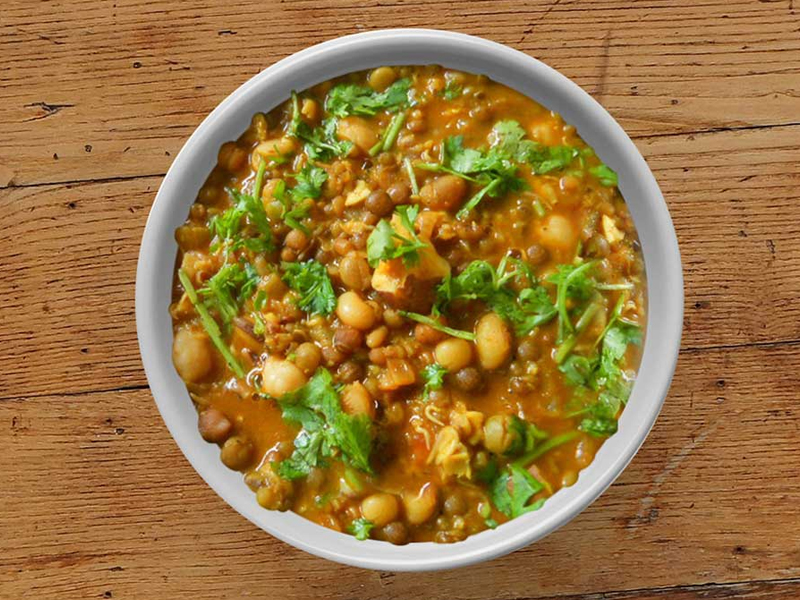
This tasty usal is sure to lighten up your meals and is a good source of protein and fibre!
Cooking time: 20-25 mins
Nutritional values (1 serving approx)
Energy: 90 kcals
Carbohydrates: 8 gms
Protein: 3 gms
Fat: 3 gms
Ingredients:
- ¼ cup moong sprouts
- ¼ cup matki sprouts
- ½ cup chana sprouts
- 1 medium onion (finely chopped)
- 1 medium tomato (finely chopped)
- 1 tsp turmeric powder
- 1 tsp chilli powder
- 1 tsp cumin seeds (jeera)
- 1 tsp asafoetida (hing)
- Few coriander leaves (for garnishing)
- 2 tsp lemon juice
- Salt to taste
- Oil for cooking
Method:
- In a cooker, heat oil. Add cumin seeds and let them crackle.
- Add chopped onions and saute till it turns translucent.
- Add tomatoes and saute for a few minutes.
- Add turmeric, chilli powder and hing. Mix well.
- Add the sprouts and salt along with 2 cups of water. Pressure cook for 5 whistles.
- Open the lid after the steam escapes from the cooker. Add lemon juice to the curry.
- Serve onto a plate and garnish with coriander leaves. Enjoy!
4. Oatmeal Smoothie
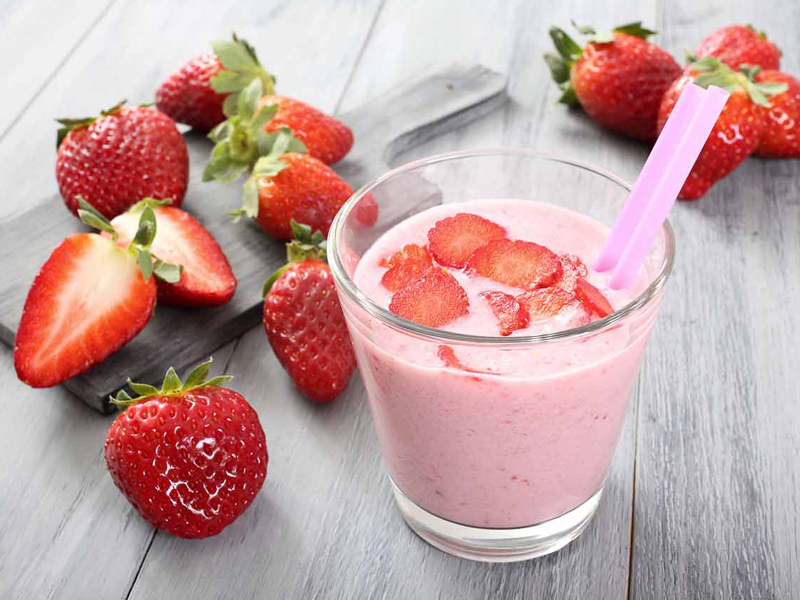
This tasty smoothie can be consumed for breakfast. It is rich in fibre, protein and gives you a whole lot of energy!
Cooking time: 10-15 mins
Nutritional values (1 serving approx)
Energy: 120 kcals
Carbohydrates: 22 gms
Protein: 12 gms
Fat: 4 gms
Ingredients:
- ½ cup oats
- ½ cup strawberries
- 1 tbsp ground flax seeds
- 1 cup skimmed milk
- 1 tsp sugar substitute (optional)
Method:
- Add all the ingredients into the blender.
- Serve into glasses. Add ice cubes if required. Enjoy!
5. Doodhi Halwa
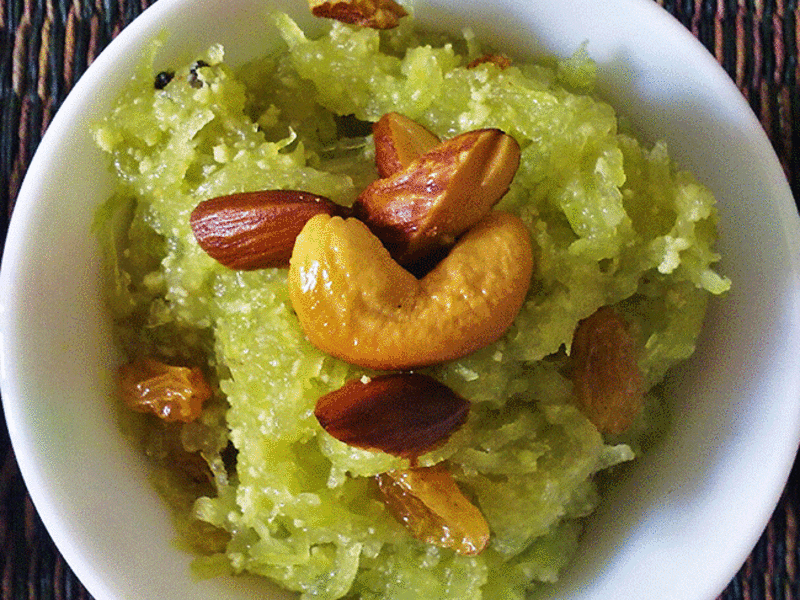
This tasty halwa can satisfy your sweet tooth and it is also low in fats as well!
Cooking time: 20-25 mins
Nutritional values (1 serving approx)
Energy: 40 kcals
Carbohydrates: 6 gms
Protein: 2 gms
Fat: 5 gms
Ingredients:
- 1 ½ cup grated doodhi
- ½ cup low-fat milk
- 1 tsp cardamom powder (elaichi powder)
- 1 tsp ghee for cooking
- 1 tsp sugar substitute (optional)
Method:
- In a pan, heat ghee. Add the grated doodhi to the pan.
- Stir for a few minutes and add milk along with cardamom powder.
- Add sugar substitute if required. Stir constantly for 15-20 minutes. Serve hot.
Key Takeaways
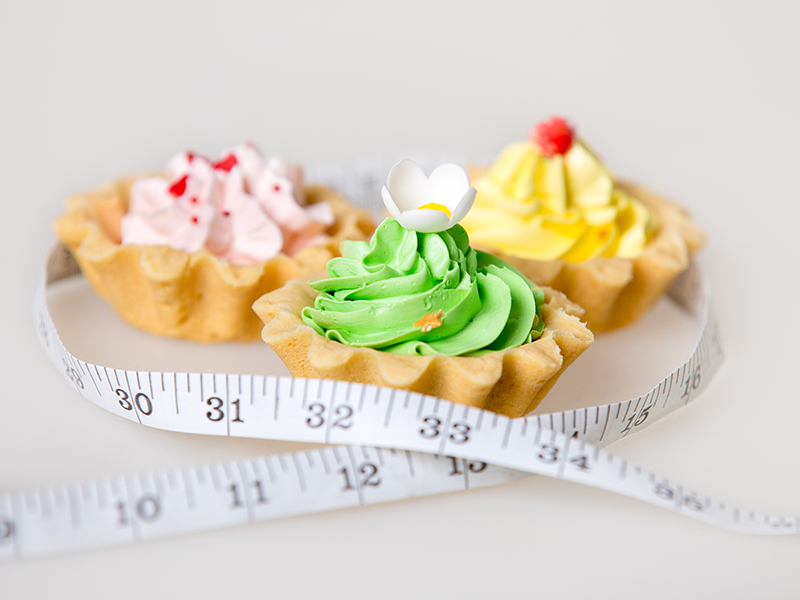
- Foods high in fibre like green leafy vegetables, fruits, whole grains and whole pulses can help in reducing glucose levels.
- Incorporate ingredients like methi seeds, turmeric (haldi), cinnamon (dalchini), curry leaves and garlic while preparing foods. (Curry leaves are good not just for diabetes, read this to know how you can use curry leaves for hair.)
- Opt for whole fruits over fruit juices as fruits are high in fibre.
- Use oils rich in Monounsaturated Fatty Acids (MUFA) like canola oil, rice bran oil, mustard or groundnut oil over oils rich in saturated or polyunsaturated fats.
- Opt for low-fat food products like low-fat milk or low-fat cheese over whole milk or milk products.
- High glycemic index foods include sugary foods, fried foods, baked goods and processed foods. Consume these foods in moderation.
- Engaging in aerobic exercises like walking, dancing, swimming and strength training exercises using elastic bands or weight machines can be beneficial.



